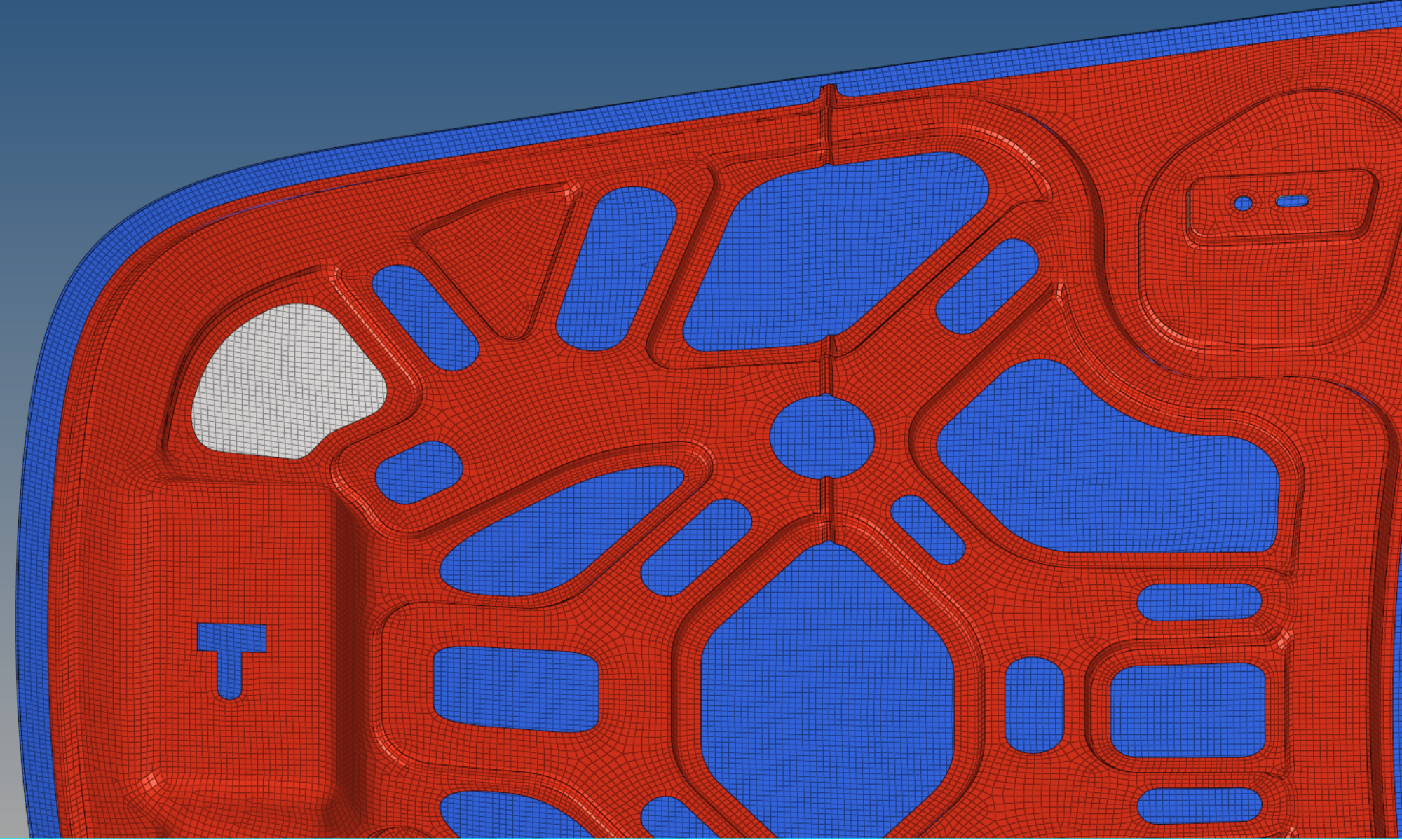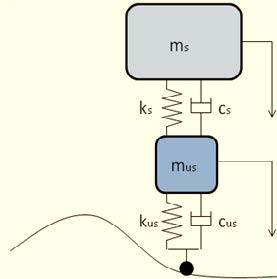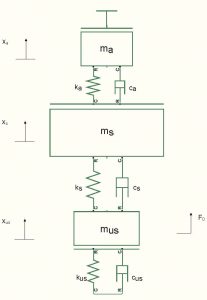Overview:-
Mitigating vibrations in any dynamical system is a necessary step. This was a simple design problem where vibration suppression in a car was improved from Primary style suspension by designing Passive and Active absorption systems. There are several progressive natural frequencies of a system at which all the components vibrate in harmony. But, often the 1st natural frequency is the most damaging for the structural health. Therefore, its amplitude must be suppressed. Using a Tuned-Mass-Damper, we can absorb the vibrational energy being generated in the system. And with a little tuning of parameters, and arranging a feedback system, we can also manage to suppress the amplitudes even more.
Design Methodology:-
A quarter car model can be adopted and the whole structure can be divided into several Degrees of Freedoms - the unsprunged mass Mus, the sprunged mass Ms. The tyre can be represented as a spring which also has damping in the rubber material. A primary model (with conventional suspension) can be said to be a 2 D.O.F system.
A great amount of vibration transmission occurs into the sprung mass (passanger cabin) due to direct connection with the unsprung mass (tyres and transmission). Hence, the sprung mass takes greatest amounts of oscillations from road irregularities. Therefore, adding an additional mass with the sprung mass to act as vibration absorber can be the solution to this problem. But this additional mass; often refered as Tuned-mass-damper, cannot be excessively heavy, otherwise it would add up to the curb weigh of the automobile. To obtain the frequency of the whole system, we need to organise each Degree of Freedom in a State Space representation. Using state variables, we compute the frequency of the system from the 'state vector' & 'output vector' by calling the MATLAB in-built function 'ss'.
To make the vibration model even more robust, a feedback with gain should be linked from sprung mass to absorber mass. Feedback can be easily incorporated in the state space variables.
To fine-tune the parameters, we need to manually adjust the mass of the absorber and permute it with different values of damping in the whole system. Or, it can be automated by sweeping the calculation by providing a range of absorber mass.
Primary system
Passive absorption system
Active absorption with feedback
Frequency response (FR) plots for different cases





